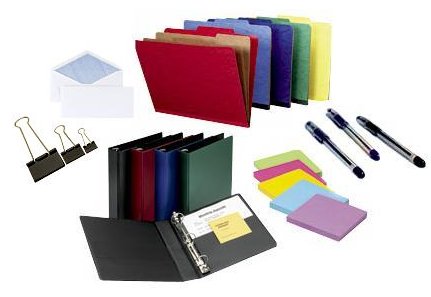ACCO Brands – An attractive investment once adjustments are made
Whenever I’m in a store it always strikes me that every product on sale there, even the small and unusual ones, are produced by some fairly large and serious corporations that employ thousands of people and do millions in business.
 One such company is ACCO Brands Corp., which makes office supplies, laminators, shredders, and notebooks and day planners. The company owns the Swingline brand and, following a merger last year, Mead as well. Half the company’s sales are outside the United States, and its largest customer is Staples at 13% of total sales. The company offers a prospective free cash flow yield of 11.8%, which is very attractive.
One such company is ACCO Brands Corp., which makes office supplies, laminators, shredders, and notebooks and day planners. The company owns the Swingline brand and, following a merger last year, Mead as well. Half the company’s sales are outside the United States, and its largest customer is Staples at 13% of total sales. The company offers a prospective free cash flow yield of 11.8%, which is very attractive.
The Mead acquisition has created a great deal of complication in Acco’s financial statements, and in order to understand them a great deal of nonrecurring matters. The acquisition required a bridging loan, various restructuring expenses and investment banking fees, and a writeoff of capitalized debt issuance costs (As an aside, has any company ever had someone offer to buy its debt issuance costs? Then why capitalize them?). On the other hand, the Mead acquisition also allowed the company to reverse the prior writeoff of net operating losses. The strategic use of mergers to make use of tax loss carryforwards is a simple but highly effective corporate strategy, but it also gave Acco a negative income tax rate in 2012. As a result, to get at Acco’s long term earnings power it is necessary to ferret out both these nonrecurring expenses and this income tax bonus.
In 2012, sales were $1786 million and gross profits as reported were $533 million. Operating income as reported was $139 million. However, merger-related expenses were $23 million and Acco also took $24 million in restructuring. Furthermore, depreciation and amortization totaled $42 million, while the company made $30 million in capital expenditures. As a result, operating cash flow, apart from changes in working capital, came to $198 million. Reported interest expense was $89 million, but this includes $16.4 million in merger financing and $3.6 million in accelerated amortization of debt issuance costs, so long-term interest expense was closer to $69 million. (Actually, the company’s refinancing lowered its average interest rate and the company paid down $200 million in debt over the course of 2012, so the company’s future interest rate is likely to be even lower). This leaves $129 million in pre-tax cash flow to shareholders, which, applying a 35% tax rate, comes to $84 million. The company also had $7 million in earnings from a joint venture, bringing its long-term estimated earnings power to $91 million. Based on the current market cap of $773 million, this is a free cash flow yield of 11.8%.
In 2011 sales were $1318 million, operating income was $115 million and operating cash flow $128 million. Interest expense was $77 million, leaving $51 million in pretax cash flow, or $33 million after taxes, plus $9 million in earnings from the joint venture.
The company reports that its increased sales and gross profits in 2012 were entirely the result of the merger, and apart from this both sales and gross profits declined, owing to weaknesses in Europe and an ongoing shift away from paper day planning products in favor of electronic calendar applications and so forth. Acco is not above whittling away its less profitable lines of business, having sold off an Australian manufactuer of binding products in 2011 and making some smaller asset sales on an ongoing basis. As a result, we can expect further restructuring expenses–the company expects $25 million in restructuring charges in 2013, of which $10 have already occurred–and so it may be optimistic to treat restructuring expenses as nonrecurring, but to the extent they are associated with discontinued operations or severance, it is not per se inappropriate to do so.
For the first quarter of 2013, Acco reported a net loss, although taking restructuring and amortization of intangibles into account the loss was negligible. The company’s operations are seasonal, with the bulk of profits arriving in the second and third quarters, so this outcome is not a great concern. During the first quarter 2013 conference call, the company announced that it was anticipating $150 million in free cash flow for the year, which would be a yield of 19.5%, although the company’s method of calculating free cash flow might not jibe with mine.
At any rate, Acco Brands offers a substantial free cash flow and office and school supplies are to an extent always in demand. Therefore, I can recommend this stock as a portfolio candidate.
Leave a Reply